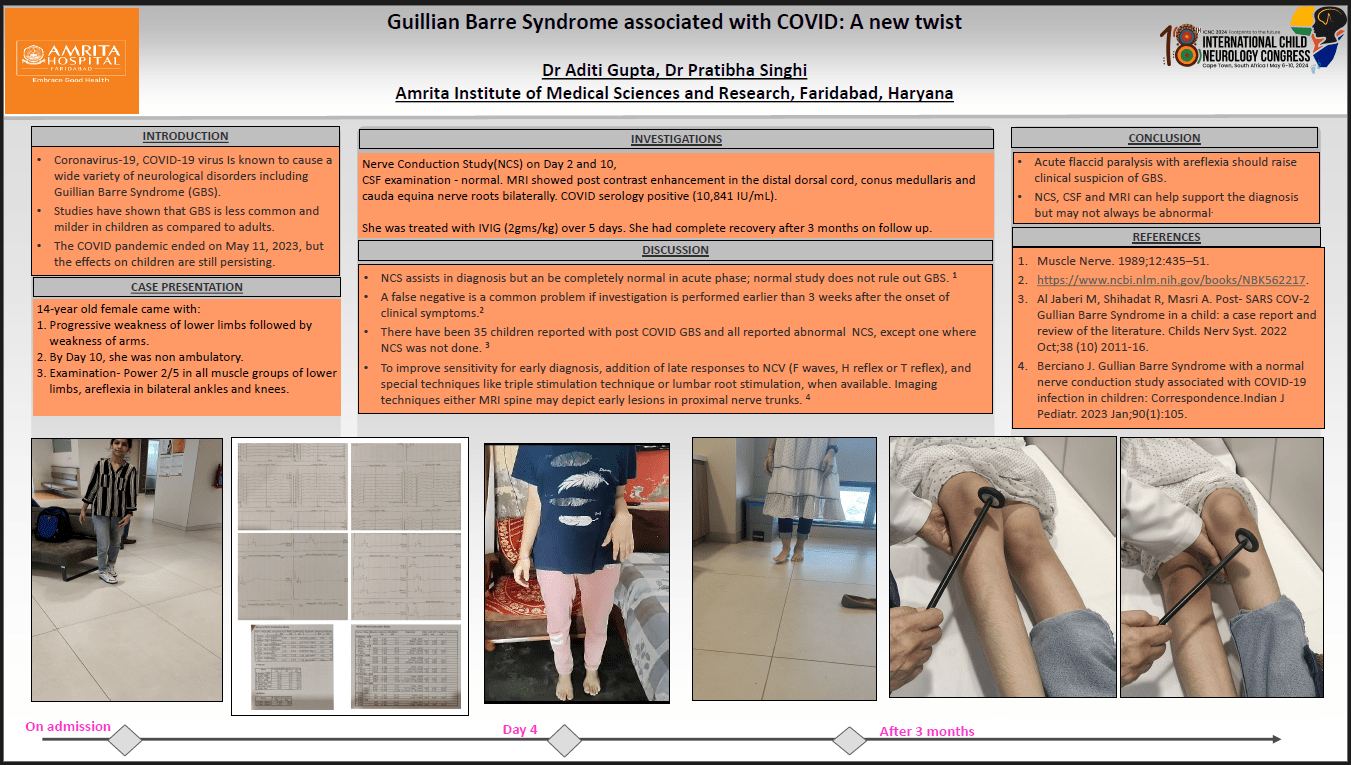Guillian Barre Syndrome Associated With COVID : A New Twist
A healthy teenager with acute flaccid paralysis, bilateral progressive weakness of legs with areflexia. Later, she developed weakness in her arms. With a suspicion of Guillian Barre Syndrome (GBS), nerve conduction study (NCS) was normal on Day 2 and day 10 of illness. She was treated with IVIG. COVID antibodies were strongly positive. On follow-up after 3 months, she had normal power in all her limbs and reflexes were elicitable.
Case: A 14-year-old healthy girl was being seen by a local practitioner for acute onset symmetrical flaccid paralysis of lower limbs. NCS on day 2 of illness was normal. After 5 days, the weakness progressed to the upper limbs. She came to our Neurology clinic on Day 10 of illness with MRC power of 2/5 in all muscle groups of lower limbs, and was wheel chair bound. There was areflexia in bilateral ankles and knees. A clinical diagnosis of GBS was made. NCS and CSF examination was normal. MRI lumbosacral spine reported post contrast enhancement in the distal dorsal cord, conus medullaris and cauda equina nerve roots bilaterally. COVID RTPCR was negative. COVID antibodies were-10,841 IU/mL. The Brighton criteria with level 3 diagnostic evidence was fulfilled. She was treated with IVIG (2gm/kg/day) over 2 days. On follow up after 3 months, she walked independently, with grade 2 ankle and knee reflexes.
Conclusions: GBS associated with COVID-19 has varied presentations. To the best of our knowledge, this is the first case of GBS in a child with normal NCS being reported.
Aditi Gupta
Amrita Institute of Medical Sciences and Research
India
Pratibha Singhi
Amrita Institute of Medical Sciences and Research
India

Aditi Gupta
Amrita Institute of Medical Sciences and Research
India